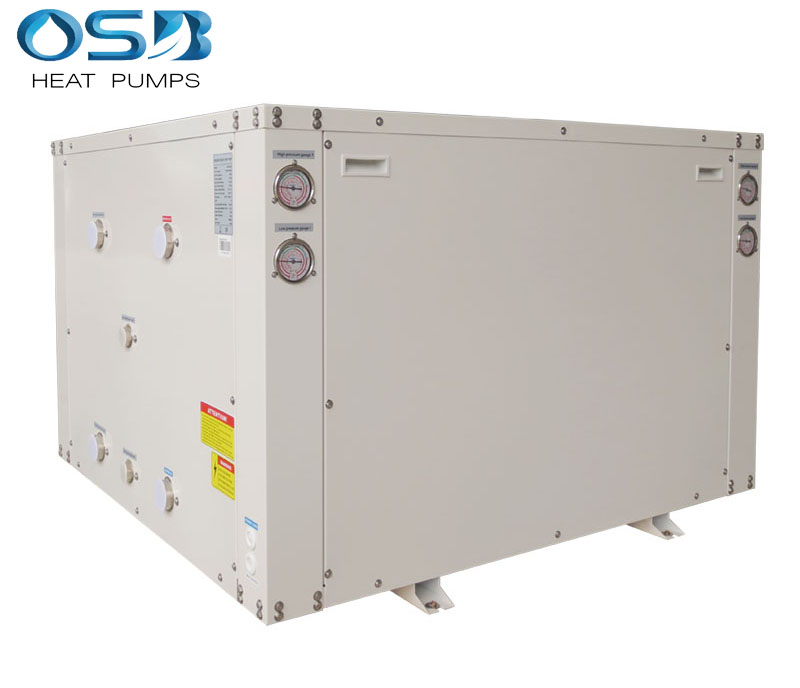
Heat pumps work by running a low-temperature, lower pressure refrigerant fluid in heat exchanger coils through a heat source, such as the outside air, the ground, or circulating water.
The fluid ‘absorbs’ this heat and boils, even at temperatures below 0° C (although the coefficient of performance (COP) decreases with lower temperature). The resulting gas is then compressed, which further increases its temperature. The gas is passed into heat exchanger coils, where it condenses, releasing its latent heat. The process then repeats.
This is the same process that is used to extract heat from a fridge. It can be used domestically or commercially and some systems can also be used to extract heat from a building to provide cooling.
Heat pumps can be used to provide hot water, space heating (either by providing hot water for under-floor heating or radiators, or supplying hot air) or other applications such as heating swimming pools.
In the UK, heat pumps are most commonly air-source or ground-source heat pumps. However, the temperature of ground water sources in the UK tends to be fairly constant for most of the year, at between 8 and 12°c. This makes water a more efficient heat source than the outside air, and the heat transfer rate with water is higher than that of air or the ground. In addition, unlike ground-source heat pumps, water-source heat pumps do not require trenches for coils to be laid in, although open loop systems often require filtration.
Water-source heat pumps require a suitable local water source, such as a lake, river, well, borehole, and so on. They can be ‘open-loop’ or ‘closed-loop’ systems:
Closed-loop systems pipe a mixture of water and anti-freeze to a water source such as a lake where it flows through coils or heat exchange panels in the water to exchange heat with it. The heated mixture is then piped to the heat pump and heat exchanged with the refrigerant.
In open-loop systems, water from the source is extracted and piped direct to the heat pump. Heat is then exchanged with the refrigerant and the water then returned to the source. As this involves extraction from and discharge to a water source, it is likely to require an extraction licence and a discharge license from the Environment Agency.
Closed-loop systems can be less efficient than open-loop systems, because of the losses caused by transferring heat between the water source and the fluid in the closed loop. However, they are less restrictive in terms of the danger of freezing, the water quality that can be used, the need for filtration or other forms of water treatment, the possibility of needing to use a corrosion resistant system and the need for licenses. Open-loop systems can also require more pumping.
Care must be taken with closed-loop systems to avoid the potential for the coils or heat exchange panels to be damaged by boats or other activities in or on the water.
Water source heat pumps are generally quiet, unobtrusive and have low maintenance requirements. However, care must be taken to ensure that the water supply is consistent and sufficient throughout the year.
Water-source heat pumps are eligible for payments under the government’s Renewable Heat Incentive (RHI) scheme. Domestic schemes may also be eligible for financing through the green deal, however, there has been very poor uptake of the Green Deal, and it is generally considered that better financial deals are available elsewhere.
Remark:
Some of the articles are taken from the Internet. If there is any infringement, please contact us to delete it. If you’re interesting in water to water heat pump products,please feel free to contact OSB heat pump. We are your best choice.

